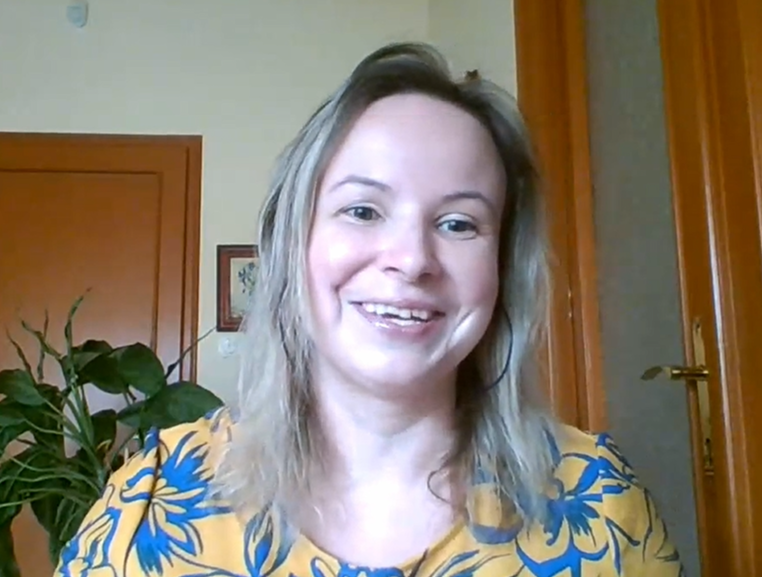Meet Hanna, Katalin and Éva

Keeping children safe online in their own language
In many ways, Hanna Presztegi is a typical teenager; in-between school assignments, she listens to music and chats with her friends online, and she dreams of starting a career as a film writer after she graduates from High School in Hungary’s capital city, Budapest.
Her recent movie project focuses on a simple but important message: “is there really an old person behind that young guy’s profile?”
Young and connected
New data from ITU shows that, on average, 71% of the world’s population aged 15-24 is using the Internet, compared with 57% of all other age groups.
Although the Internet presents incredible opportunities for young people – from online education to socializing – cyberbullying, data protection issues, harassment and financial exploitation are just some of the risks that they can face on the Internet.
And the issue of online safety is becoming increasingly more important as the number of young people online is growing rapidly, with one child going online for the first time every half second around the world.
But acquiring the necessary skills to stay safe and secure online is not as easy for today’s connected children as everyone assumes, Hanna says.
“The subject of online safety and security was not emphasized at school; maybe they thought we ‘live’ more in the online environment than our teachers, so this responsibility fell to my family,” says Hanna.
“But there is a lot of information on the Internet and it is difficult to tell what is a scam or fake news. This is already very hard for me, but probably even harder for my grandmother,” she says.
Learning to navigate today’s online environment
Despite Hungary’s active and strong legislation in child online protection, developing lesson plans and learning material for information and communication technology (ICT) classes was a difficult task for Hungary’s informatics teachers.
That is because there was not a lot of information available aimed at younger age groups in the Hungarian language.
That is why Katalin Baracsi, an Internet lawyer and advocate for children’s digital safety and security, decided to help.
In coordination with Hungary’s Ministry of Innovation and Technology and the ITU Office for Europe, she translated ITU’s Child Online Protection (COP) Guidelines – a series of toolkits and guides on staying safe online aimed at children, teachers, parents and carers, as well as policymakers and industry – into Hungarian and ensured the Guidelines were used as a reference point for Hungary’s national campaign towards strengthening confidence and security in the use of ICTs.
All of this helped to introduce children across Hungary to Sango, the friendly child online protection mascot, in their native language!
Enter Sango, ITU’s Child Online Protection mascot

Who is Sango?
Created and designed by children, Sangophone – or Sango for short – is a Japanese telephone and ITU’s Child Online Protection mascot. Launched on Safer Internet Day 2020, it helps children, parents and teachers understand the dangers that children face being online and how to manage them. Watch the ‘Online Safety with Sango’ video lessons here!
Katalin first heard about ITU’s COP Guidelines in the early days of the COVID-19 pandemic, when students were attending school online from home.
“Everybody was online and they wanted to know more about the risks and opportunities of online activities, and teachers needed some new, easy content to learn and share more about digital safety,” Katalin says.

“Sango and the ITU Child Online Protection Guidelines are great materials to help implement digital and media literacy in your daily life in a simple and clear way. The teachings are encouraging and empowering, and they show that everybody has a role to help each other in these situations,” Katalin says.
And these tools are already helping teachers like Éva Tusoné Fekete, who is using them to create a more structured lesson plan with essential protection tips – which she found especially useful during distance learning, when her students would spend up to 10-12 hours online every day.
“Sango tackles child online protection issues with systematic content, covering many essential areas,” said Éva. “Until now, to educate children about online safety, I did a lot of research, I prepared materials and cropped many sources together. It didn’t have a common strategic concept. Now I have a step-by-step guideline I can follow which makes teaching about this topic much easier. For us educators, it is and will remain a great help.”
Moreover, because Sango’s stories involve everyone in the family, Éva says that her lessons are having a generational knock-on effect.
A safe and secure digital future
Hanna agrees that she now feels more secure online, thanks to the availability of these stories in her native language – and hopes that her animated video will help fellow young people stay safe online, too.
“I now feel more secure. Even though I did not have a bad experience, I am now paying more attention to what I’m doing, to whom I’m talking, and how and what things I post online,” she says.
“I hope that people will like the video and they can benefit from it. Hopefully, if in the future people will find themselves in a similar situation, they will remember that there isn’t always a magic wand and will rather take the advice from the animation.”
And Sango had a big impact on Hanna offline, too: she fell in love with Japan after creating her animated Sango video and is now learning Japanese in anticipation of spending a year or two in the country to learn more about the culture.
* The United Nations, for statistical purposes, defines ‘youth’, as those persons between the ages of 15 and 24 years and a child as those persons up to the age of 18. Learn more.


